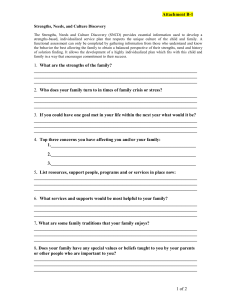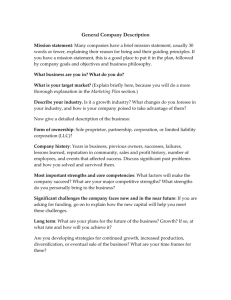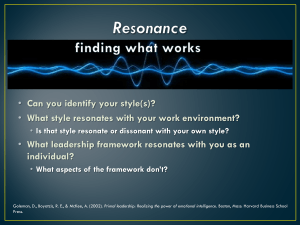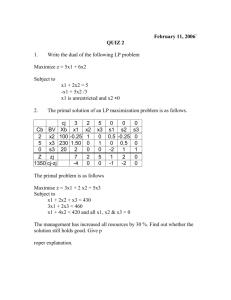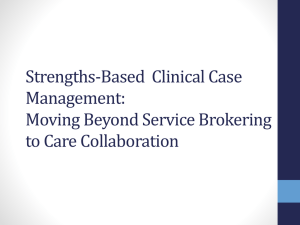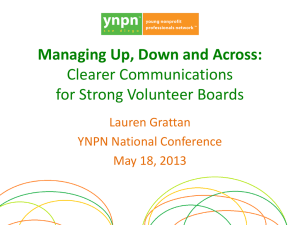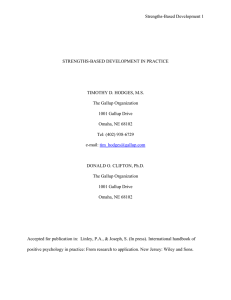Primal Leadership
advertisement
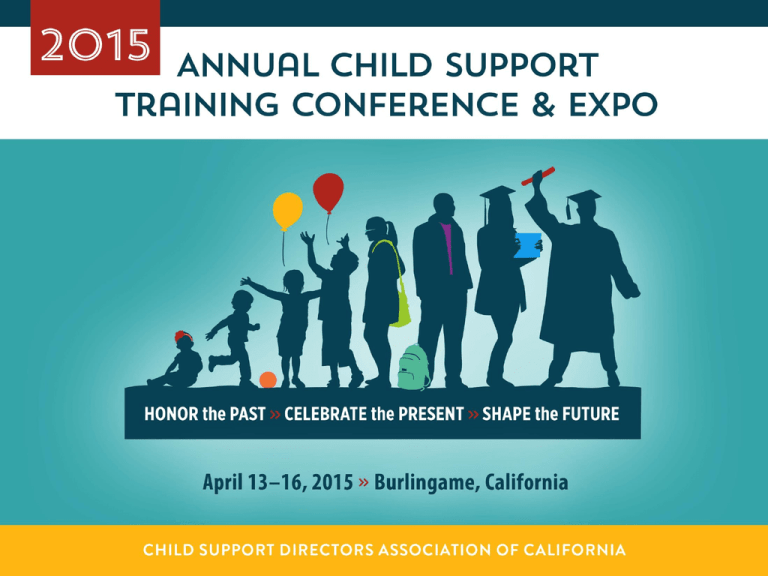
Life Lessons in Coaching Leadership Styles Steven Eldred Director, Orange County CSS Agenda ■ Defining Success ■ Types of leadership styles ■ ■ ■ Primal Leadership Situational Leadership Warrior Leadership ■ Strengths-Based Leadership ■ Act II: When Do I Need to Change? Defining Success Goals – Performance? Stock value? Horizon – Short-term or long-term? Outcomes / Effects Employee satisfaction vs. profit/performance Measurement Sales? Performance metrics? Sick Days? Customer Satisfaction? Leadership Styles How Do I Get Where I Want To Go? 1948 Army Leadership Principles 1. Know yourself and seek self-improvement 2. Be tactically and technically proficient 3. Seek responsibility and take responsibility for your actions 4. Set the example 5. Know your people and look out for their welfare 6. Keep your people informed 7. Ensure the task is understood, supervised, and accomplished 8. Develop a sense of responsibility among your people 9. Train your people as a team 10. Make sound and timely decisions 11. Employ your unit in accordance with its capabilities “Primal Leadership” The Coercive Leader Positive or negative coercion Clear demands? Difficult to change from this? The Authoritative Leader Clearly describes expertise-based vision Reduces confusion, focuses effort Open to new ideas? The Affiliative Leader Establishes positive relationships, seeks feedback Inclusive environment Frequent feedback Tolerates mediocrity? Primal Leadership: Learning to Lead with Emotional Intelligence by Daniel Goleman, Richard Boyatzis and Annie McKee. “Primal Leadership” The Democratic Leader Consensus is primary concern Trust, commitment are hallmarks New ground, new programs? Poor crisis-response model The Pacesetter Leads by example – personal excellence Sets high standards for all Trouble trusting or delegating The Coach Recognizes talent, develops people Offers personal development, challenging assignments Sees the future, brings out the best in individuals Takes a serious time, resource investment for the long-view benefit Primal Leadership: Learning to Lead with Emotional Intelligence by Daniel Goleman, Richard Boyatzis and Annie McKee. Warrior Leadership Tom Magness, Colonel, U.S. Army (Ret) ■ Mission First – but know your mission ■ Leader Development – 40% of your time. ■ ■ ■ ■ Build a Culture Big Ideas Learn Communicate Situational Leadership Directing Low willingness or low ability Coaching High willingness, low ability Supporting Low willingness, high ability Delegating High willingness, high ability Ken Blanchard and Paul Hersey 1972-96 Strengths-Based Leadership Clifton Strengths Finder (Gallup Press) Employees and Leaders take the Online test System reveals 5 top Strengths out of the 34 possible – and that information is shared among workgroups. Insight into one’s top strengths, clues on what drives individual success. Strengths-Based Leadership Achiever Activator Adaptability Arranger Belief Command Communication Competition Connectedness Consistency Context Deliberative Developer Discipline Empathy Focus Futuristic Harmony Ideation Includer Individualization Input Intellection Learner Maximizer Positivity Relator Responsibility Restorative Self-Assurance Significance Strategic Woo Strengths-Based Leadership 2 years to implement to 650 employees Books, videos, staff time to participate in learning sessions About $125/employee Constant reinforcement – awards, evaluations, etc. Major buy-in from employees – they get to capitalize on what makes them stronger Act II – Making Changes Act II – Making Changes Leaders succeed when they bring their strengths to bear – and excel when the agency’s needs match their strengths and abilities. What happens when the match doesn’t match anymore? What does a firefighter do when the fire is out? Sometimes, the very skills that made them successful in Act I may be the very opposite of what is needed in Act II. The approaches that worked so brilliantly for a CEO in Act I may be the very opposite of what is needed to bring Act II to a happy resolution. The CEO’s Second Act David A. Nadler, Harvard Business Review, 2007 Four Steps to Renewal Recognition Lower response to initiatives? Less growth or interest? Recruitment, retention rates? Acceptance Self-analysis: what part do I play in this? Analysis and understanding. Outside, objective evaluation Where is the agency now? Where should it go? (External view) Decision and action Personal change Possible? Desirable? Structural change Align leader’s strengths to needs elsewhere Change the organization to use resources differently Accelerated succession Act II – Making Changes Choices: Refuse to Change (and be replaced?) Realize new skills are required, and learn them! Change role to adapt to changing needs Find or train a successor to take the agency to the next development phase. The CEO’s Second Act David A. Nadler, Harvard Business Review, 2007 Act II’s Four Variations 1. Remake your company into one that has no place for you. 2. Remake your company—then yourself. 3. Respect your limitations while growing your company. 4. Remake your company, then move on. The CEO’s Second Act David A. Nadler Steven Eldred seldred@css.ocgov.com 714-347-8115
